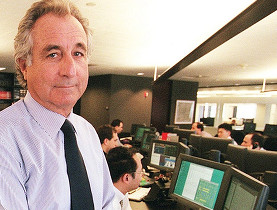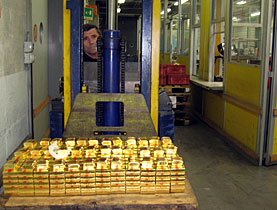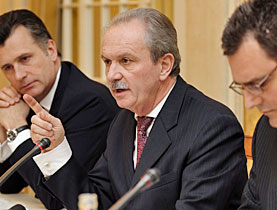Swiss banks add up cost of investment scam

Private banks in Switzerland have been caught up in an elaborate fraud that collapsed in the United States last week with $50 billion (SFr59 billion) losses.
Two banks have admitted getting their fingers burnt while speculation is intensifying that other financial institutions have lost up to SFr5 billion in the Bernard Madoff Investment Securities scam.
The full extent of the global fraud, masterminded by former Nasdaq chairman Bernard Madoff, was still emerging on Monday after the US authorities intervened on Thursday.
The Lucerne-based private bank, Reichmuth Matterhorn, said at the weekend it had investments in hedge funds associated with the Wall Street trader of around SFr385 million ($327 million).
Wealth management bank Bénédict Hentsch said it had entrusted Madoff’s investment company with SFr56 million of its clients’ assets. The bank broke off its merger with the Fairfield Greenwich Group hedge fund on Monday as a result of the scandal.
Le Temps newspaper listed several other Geneva-based banks and financial institutions that it claimed had heavy exposure to the Madoff fraud.
It appears that several banks may have investments in Madoff through third parties such as hedge funds or funds of hedge funds.
“One big lie”
The scandal could not have come at a worse time for the beleaguered financial industry, which is still reeling from massive losses sustained by unwise investments in bad debt.
Confidence in the sector is already low as the mistakes filter through to the real economy, sending many countries into recession.
The latest news is another nail in the sector’s coffin, according to Andreas Missbach from the Swiss pressure group Berne Declaration. Missbach fears that a poor regulatory system could expose the industry to more such scams.
“This shows that our critical view of the financial system was not critical enough. It also shows that the hedge fund industry cannot remain unregulated because any fund could be run as a Ponzi scheme [see box] at the moment,” he told swissinfo on Monday.
“The big surprise is that Bernard Madoff was not an unknown, dubious character operating in the shadows, but that he was well-known and respected in the industry. It gives an indication that there may be other such schemes out there. If someone like Madoff can do this, then anyone can.”
US prosecutors called Madoff’s operations “basically one big lie” and likened it to a “Ponzi” scheme – a fraudulent structure that pays out dividends to investors from money generated from new investors rather than from business profits.
Problems were suspected
Professor Stewart Hamilton of the IMD business school in Lausanne said it was hard to comprehend why investors had continued to pour money into the scheme as regulators stood by despite serious doubts being raised about Madoff’s practices.
“There is a basic rule that if it looks too good to be true then it probably is too good to be true,” he told swissinfo. “The banks seem to have lost sight of the fact that higher yields mean higher risks. It is reminiscent of the dotcom bubble, and the due lack of diligence is astonishing.”
Hamilton added: “Swiss private banks with exposures could find that clients are coming back to them claiming negligence or that they were mis-sold products. Hopefully this will help people realise that the root cause of the problem is that the regulators are totally underfunded and under-resourced. They get inexperienced people who are easily intimidated while any regulator that looks any good gets headhunted.”
swissinfo, Matthew Allen in Zurich
Named after conman Charles Ponzi, the Ponzi scheme is a fraudulent investment operation offering huge returns.
These proceeds are dished out, not from legitimate business profits, but from the money paid into the scheme by subsequent investors.
As news of the scheme’s high dividend payments spreads, it attracts more people. Ultimately, the scheme runs out of investors and collapses.
Charles Ponzi, an Italian immigrant to the US, had his name attached to the swindle after his scheme was discovered in a blaze of media publicity in 1920.

In compliance with the JTI standards
More: SWI swissinfo.ch certified by the Journalism Trust Initiative




You can find an overview of ongoing debates with our journalists here. Please join us!
If you want to start a conversation about a topic raised in this article or want to report factual errors, email us at english@swissinfo.ch.